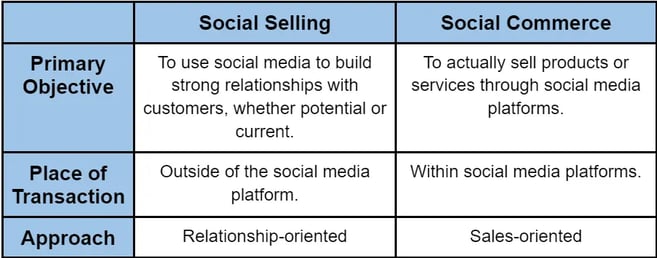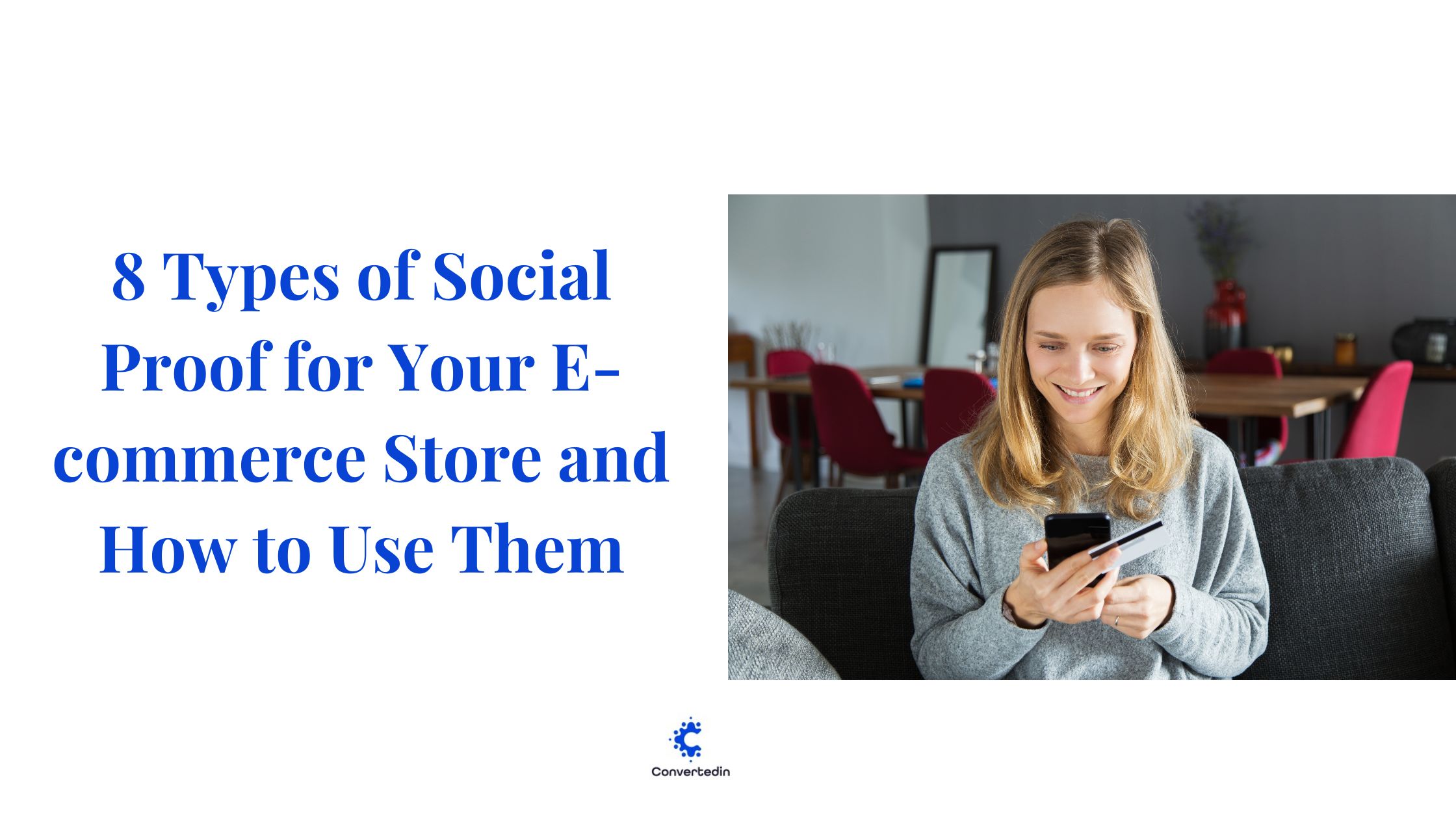The Ultimate Comparison: Social Selling vs. Social Commerce
The digital era we’re living in now is full of fascinating tools that eCommerce businesses can use to grow and flourish. Among these tools, we can find “Social Selling” and “Social Commerce.” People often use these two terms interchangeably; however, this is a mistake because, even though both tools can benefit your eCommerce store, each one of them does this differently and uniquely.
If you own an eCommerce store or work in one, it is time to familiarize yourself with the differences between social selling and social commerce. That is important before you decide to dive into either one of them. This article will provide you with an exhaustive comparison that includes the definition of both tools, their benefits, and the best channels to use for each. Keep reading to learn all of that.
Table of content:
- Definition of Social Selling and Social Commerce.
- Important Statistics About Social Selling And Social Commerce.
- Benefits of Social Selling vs. Benefits of Social Commerce.
- Best Channels for Social Selling vs. Best Channels for Social Commerce.
Social Selling vs. Social Commerce (Full Comparison)
1- Definition of Social Selling and Social Commerce
 Image source: propelrr.com
Image source: propelrr.com
- Social Selling definition: Social selling refers to engaging with prospects, customers, or even influencers and establishing relationships with them through social media platforms or similar online channels. The ultimate aim of this is to drive conversions and boost sales. Social selling is a sales strategy that takes advantage of the magic social media networks can create when it comes to building relationships.
In other words, social selling is defined as the process of using social media channels to influence potential or current customers and persuade them to visit either their online store or brick-and-mortar store to make a purchase.
E-Commerce stores leverage social selling by having accounts throughout the different social media platforms and using them to create compelling posts and share eye-catching visuals that tell attractive stories about their brand, products, or services.
- Social Commerce definition: Social commerce refers to using social media platforms to conduct online sales transactions. It is about leveraging social media networks to create an enhanced, frictionless, easy, and seamless buying and selling process for customers.
In other words, social commerce is defined as the direct selling of products or services to customers through social media channels.
E-Commerce stores leverage social commerce by incorporating the entire shopping experience into their social media accounts from the step where the customer knows about the product to the one where they buy it.

Before moving on to the benefits of social selling and social commerce, there are a few more differences that we want to highlight for a better understanding of how much they differ.
- The primary objective of Social Selling is to use social media to build strong relationships with customers, whether potential or current, while the primary objective of Social Commerce is to actually sell products or services through social media platforms.
- When using Social Selling, the sales process takes place outside of the social media platform. This means that customers still have to go to the online website or the physical store to make a purchase. However, with Social Commerce, the entire buying process happens within the social media platforms. Customers do not have to go anywhere else.
- Social Selling is mainly relationship-oriented, while Social Commerce is sales-oriented.

2- Important Statistics About Social Selling And Social Commerce
Social Selling Statistics:- Studies show that 61% of businesses that use social selling report revenue growth (Hubspot, 2023).
- When making buying decisions, 75% of all internet users use social media to research brands before making a purchase (Reply, 2022).
- Research shows that businesses that use social selling have a 51% more chance to achieve their sales quota (OptinMonster, 2023).
- Social selling provides 45% more sales opportunities than traditional sales (Linkedin Sales Solutions, 2022).
- Social selling techniques are three times more likely to create a positive ROI compared to traditional sales tactics (Gitnux, 2023).
-
The sales of worldwide social commerce were estimated to reach $1.298 Billion in 2023 (Influencer Marketing Hub, 2023).
- Statistics show that 11% of social media users make an online purchase immediately after discovering a product, and 44% make a purchase later on (Statista, 2022).
- Social commerce sales are expected to reach $605 billion by 2027 (Statista, 2023).
- Around 50% of Gen Z make purchases on social media (Insider Intelligence, 2022).
- Research shows that, in 2022, 49% of brands said they were planning on investing more in social commerce (Shopify, 2022).
Benefits of Social Selling vs. Benefits of Social Commerce
 Image source: emizentech
Image source: emizentech
The thing about the benefits of social selling and those of social commerce is that they are not completely distinct. At the end of the day, both tools would lead to an increase in the conversions, sales, and profits of your eCommerce store. However, we can say that each tool yields some results more directly than the other, which is illustrated in the following points.
Benefits of Social Selling:
- Establishes Stronger Relationships: As we said earlier, the main objective of social selling is to build strong and long-lasting relationships with customers; hence, this can be considered one of its most significant benefits. In other words, social selling yields business-customer relationships built on loyalty and trust.
- Boosts Brand Awareness And Visibility: Studies show 4.8 billion social media users worldwide (Search Engine Journal, 2023). Therefore, social media is one the best places an eCommerce store can spread awareness about its brand and increase its visibility. To better illustrate, implementing social selling and using social media to interact with potential and current customers through posts, videos, and images can make your eCommerce brand visible to a much bigger audience. Additionally, with time, social selling leads to enhancing your brand image.
- Generates Leads: Another crucial benefit of social selling is lead generation. Social selling is known to be a cost-effective method to generate high-quality leads.
- Drives Website Traffic: As we said, the more you engage with your customers through social selling, the more your eCommerce brand becomes visible. High brand visibility will lead to more people visiting your website; and hence, more traffic.
- Creates More Sales Opportunities: If you look at the benefits we’re discussing more closely, you will notice that each leads to the other. So, having strong relationships with customers and high brand visibility means generating more leads. Generating more leads means more website visitors, and more website visitors means that there will be more sales opportunities.
Benefits of Social Commerce:
- Creates A Seamless Shopping Experience: The most significant benefit of social commerce is the incomparable seamless shopping experience that it creates for customers. To better illustrate, social commerce allows customers to do everything from the convenience of their social media accounts. In other words, it allows users to browse, research, scroll, select, buy, and pay directly from their preferred social media networks. It can’t get more convenient than that!
- Optimizes Conversion Rates: When discussing the benefits of social selling, we talked about leads; however, when talking about social commerce, we will talk about conversions. By facilitating the purchasing process and minimizing the steps between finding the product and buying it, social commerce leads to more conversions; and hence, optimizes conversion rates.
Best Channels for Social Selling vs. Best Channels for Social Commerce
After thorough research, we concluded that there is not much difference between the channels used for social selling and those used for social commerce. Both tools can be implemented through the same social media platforms. The following list is not exhaustive but it includes the best channels that eCommerce businesses should use with social selling and social commerce.

The number of monthly active users on Facebook is almost 3 billion users. The Facebook platform is a great way for an eCommerce brand to reach customers and interact with them, which means that it is perfect for social selling. It also offers what is known as “Facebook Shop,” which is a feature through which an eCommerce brand can directly sell its products or services on the platforms.
The number of monthly active users on Instagram is around 2.35 billion users. That’s why Instagram is as significant as Facebook is when it comes to choosing the perfect channels for social selling and social commerce.
On the one hand, as a visually-focused social media channel, Instagram gives eCommerce brands the chance to engage with their customers through high-quality images and videos either shared as posts or as Instagram Stories. This supports social selling.
On the other hand, Instagram is constantly evolving. For instance, it has developed what is known as “Instagram Shopping” and “Shoppable Posts’ that allow eCommerce stores to sell their products directly on Instagram without asking the customer to visit the website or leave the application for any reason. This supports social commerce.
Pinterest is another visuals-oriented social media network that is very suitable for eCommerce businesses utilizing social selling and that want to communicate with potential buyers using attractive images of their products. It is also becoming very useful to businesses implementing social commerce because, just like other popular social media platforms, Pinterest now has buying features, such as “Shoppable Pins”.
** Learn How To Use Pinterest To Promote Your Online Store.
- TikTok
The number of monthly active users of TikTok is around 1.06 billion users, which is not a number that should be underestimated. TikTok is a great channel for both social selling and social commerce. On the one hand, it is perfect for eCommerce brands that wish to create relationships with customers through fun videos and online challenges. On the other hand, just like all the social media channels we’ve discussed previously, TikTok also has shopping features that serve social commerce purposes.
All the previous social media channels are suitable for eCommerce businesses implementing either social selling or social commerce or both.
However, there are a few other social media platforms that are more suitable for social selling because they do not have the shopping features that would make them achieve social commerce goals. These platforms are the following:
- Twitter: It is a great way for brands to interact with customers and build real relationships with them because it is a fast-paced social media channel that is characterized by real-time interactions.
- LinkedIn: It is perfect for social selling, especially if you are a B2B eCommerce brand, because it is a professional platform for networking.
- YouTube: It is also very good for social selling strategies because brands can use it to share videos that tell compelling stories about their products or services.
Final Thoughts:
We can finally conclude that social selling and social commerce are two distinct sales strategies, but they also have a lot of significant similarities that make them closely related. As we’ve seen throughout the articles, on the one hand, both tools differ in the way they are defined, their objectives, their purposes, and some of their benefits. On the other hand, they are similar in most of the channels that they use. We advise you to combine both strategies to get the best results possible for your eCommerce store.
If you want even better results, make sure to book your demo for the marketing automation tool that Converted.in is offering you today. This tool can easily do the following for your business:
- Segment your target audience, which is essential for your social selling and social commerce strategies to succeed. It will also gather all your customers’ data into one place, like a hub, so that you can access it easily.
- Create, personalize, launch, and automate your email marketing campaigns, SMS, and social media ads.
Book your demo now and start your journey with social selling and social commerce.
 By
By

